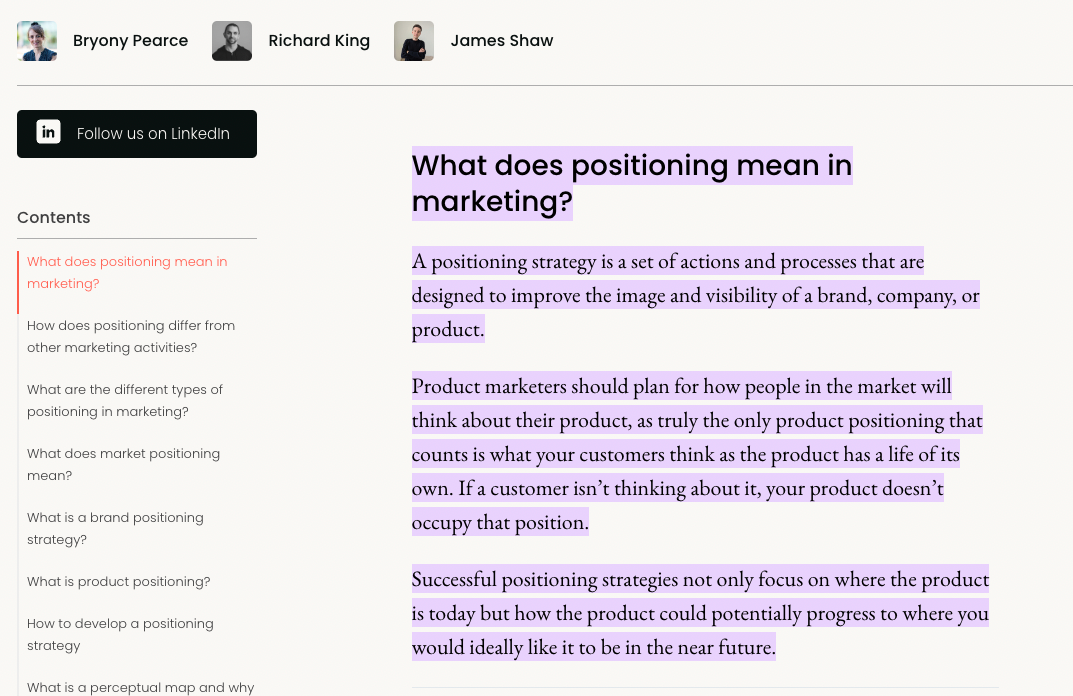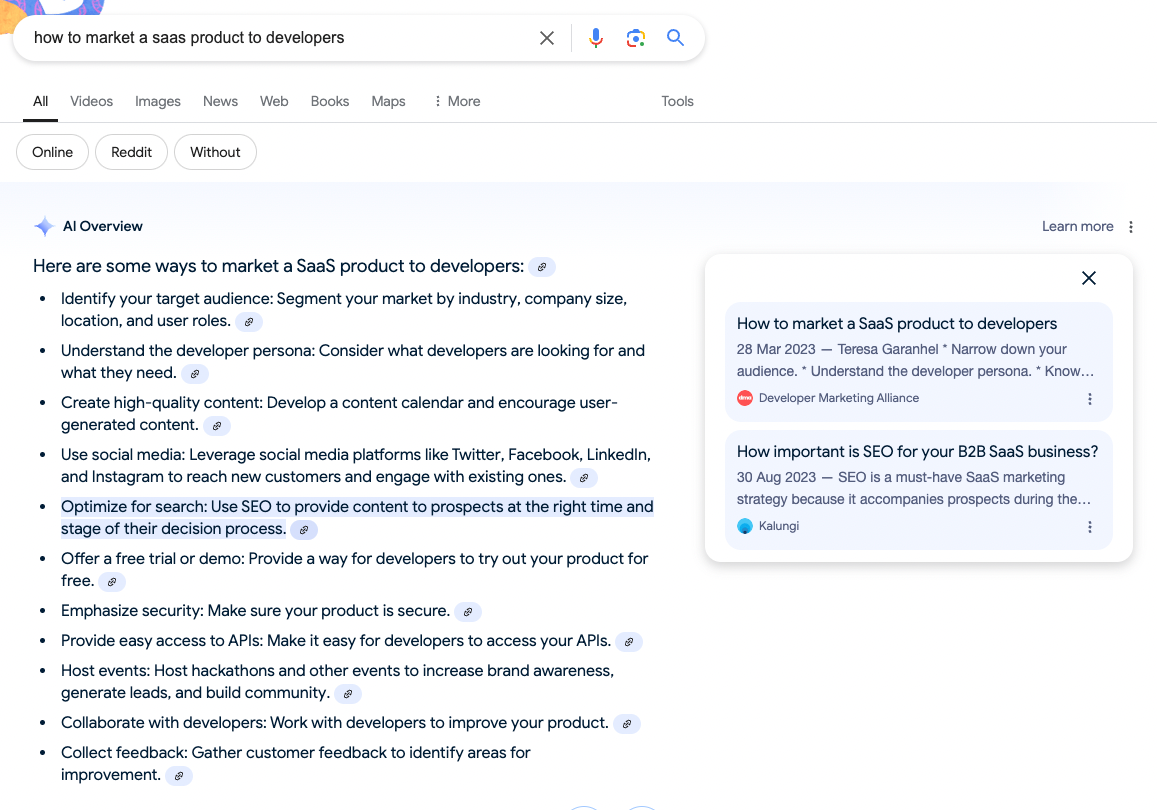I’ll begin by giving you two queries to think about. Your job is to work out the difference between them.
Query 1 (720 searches):
How many majors has Tiger Woods won?
Query 2 (1000 searches):
Who is the best golfer of all time?
Got it yet?
As I see it, the principal difference between these two searches is that the first can be easily answered by an AI Overview (AIO), whereas the second cannot (try it yourself - the AIO result is useless).
The first is a basic fact. It’s readily available information to which everyone has access. The second query, on the other hand, is entirely subjective — there is no single correct answer.
Determining who is the best golfer of all time is a matter of informed opinion, nuance, and debate. To get a good answer to this query, you probably need to read two or three (or a hundred) different perspectives.
Deserved vs undeserved traffic
You might, rightly, be wondering why sports-related search terms are relevant to marketers – so let me explain. The dichotomy above perfectly illustrates where businesses need to land regarding organic keyword selection in 2024 and beyond.
The days of driving organic traffic with content that merely answers simple questions are over. In this sense, AI Overviews have completed a trend that began with featured snippets a decade ago.
If you’ve been driving traffic from queries like “when did Google introduce featured snippets?” (a query I used myself moments ago), then I wouldn't bank on getting this traffic for much longer.
In much the same way as asking for the temperature in Los Angeles, or the time in Shanghai, queries that demand a simple, factual answer are no longer a sustainable source of traffic. And, if you ask me, they shouldn't be.

I call this phenomenon "deserved vs undeserved traffic".
By "undeserved", I'm referring to efforts to drive traffic to a webpage for a query that could easily be answered by any number of Google's SERP features.
"Deserved" traffic, by contrast, is where the publisher has attracted visitors by providing a level of detail, analysis, or originality that cannot be replicated in a brief overview (whether that's a featured snippet or an AI Overview). In the era of AI-powered search, this is the sweet spot for SEOs.
Answer Engine Optimization: Driving traffic in the AI era
So how should publishers, marketers and SEOs respond to the proliferation of AI-powered search engines? And how can we build content strategies that generate deserved (read: sustainable) traffic.
Ultimately, SEO strategies in 2024 ought to revolve around two goals: (1) Driving quality traffic from traditional search results, and (2) earning citations in AI Overviews. Let’s take each in turn.
Traditional organic results
Despite what you might hear about SEO being “killed” by AI, the traffic impact of AI-driven answer generation is relatively small (for the moment, at least).
Research from Kevin Indig, for instance, points a 2.8% traffic loss for URLs that do not appear in AI-generated results when an AI Overview is triggered. Similarly, research from NP Digital shows that only 12% of marketers in the United States are "very pessimistic" about the traffic impact of AI Overviews.
From our experience at The Alliance, we haven't observed any alarming changes to our click-through rates in the wake of AI-organized search results – and we publish a lot of informational content.
So if we accept the premise that traditional search results will continue to drive traffic, then it goes back to selecting keywords that demand something more thorough than an AI snapshot. In other words, it's about focusing on deserved traffic.
This is where it's vital to operate diverse content strategies that go beyond the increasingly outdated "you ask, we answer" approach. Instead, marketers must be focused on providing value over and above simply answering a question – this involves offering original perspectives on topics, leveraging first-party data and research, and demonstrating unique, real-world experiences (more on that later).
If you want to learn more about the current state of traditional SEO tactics, read our deep dive on the March 2024 core update here 👇

How to rank in AI Overviews
At the time of writing, there's no tried and tested guide on how to earn AIO citations for queries that matter to your business.
AI Overviews simply haven't been around long enough for us to develop a clear picture of how they work – and the citations change so frequently that it's difficult to identify consistent patterns through experimentation and observation. In other words, we don't know precisely which ranking factors are being used to produce AI citations.
That said, it seems likely that the key to ranking in AI Overviews involves employing tactics and strategies that will be familiar to anyone working in the traditional SEO space. As Liz Read, Google's VP of Search, put it: "AI Overviews are built to only show information that is backed up by top web results".
AI Overviews and Passage Rank
But although there is a clear crossover between traditional organic results and AIO citations, there are some important nuances to consider.
The first thing to note is that AI Overviews don't cite pages or websites. Instead (and in much the same way as featured snippets), they cite passages. To see this in action, simply click on a citation and you'll be directed to a highlighted passage on a page. This is our first window into how citations work.
One of the keys to earning citations for queries that matter to your business is ensuring that your content contains succinct and fresh passages that match search intent.
Below is an example of how we reworked a passage on our sister website, productmarketingalliance.com, to earn a citation for a highly important query. The aim was to provide a thorough, yet condensed, overview of the topic. The passage covers the "what", "who", and "why" of the query.

Strong passages, however, aren't enough to guarantee AIO citations.
Kevin Indig also found a strong correlation between sites that appear in the traditional top 10 results and sites that are cited in AIOs. This suggests that the fastest way to earn a citation is to continue to employ strong SEO fundamentals into your content strategy.
Important components to consider are content relevancy, freshness, and, of course, referring domains.
Even more important, though, is ensuring that your content satisfies Google's Expertise, Experience, Authority, and Trust (E-E-A-T) criteria. The objective, after all, of AI-powered search is to surface varying perspectives on a topic in order to provide searchers with a "jumping off point". This is very important.
Focusing on topics vs keywords
This leads on to our next, and possibly most important, point. To fully understand how AIOs work, we have to shift our focus away from keywords and towards topics. Google's own documentation puts it this way:
AI Overviews show links to resources that support the information in the snapshot, and explore the topic further.
Herein lies an opportunity for marketers. Since the purpose of AI-generated search is to improve the search experience (particularly around complex topics), AIOs will typically cite a diverse range of URLs that expand on the topic.
In other words, AIOs are unlikely to simply cite a set near-identitcal pages that exact-match the query (like we often see in traditional search results).
Below is an example of this in action. Here, we have a fairly complex query – and the answer is predictably multifaceted. This presents plenty of opportunities for publishers to earn a citation, even when the cited page doesn't match the original query.

The lesson here is to build your content strategy around topics in a broad sense. SEOs who are able to do this will start to see AI Overviews less as a threat, but more as an opportunity to appear for queries they wouldn't rank for in traditional search results.
What's next?
So, what are the key takeaways here?
The first is that we shouldn't be giving up on traditional search results. The classic 10 blue links will continue to drive traffic until there is a major shift in user behavior.
But we will need to be more focused on queries that cannot be fully satisfied by an AI snapshot. To shift your content strategy in this direction, you'll need to explore longer tail queries that demand original thought, unique perspectives, or insights backed by proprietary data.
The second point is that when it comes to AIOs, your thinking has to shift to topic targeting in order to maximize your changes of earning citations. AIOs will provide opportunities to rank for queries that might otherwise be too competitive. By casting your net wide, and focusing on E-E-A-T attributes, you'll increase your chances of earning those all-important AI Overview references.
So next time you're creating a new piece of content, remember Tiger Woods. Are you telling the reader how many majors he's won, or are you making the case for why he's the best golfer of all time?



 Follow us on LinkedIn
Follow us on LinkedIn



